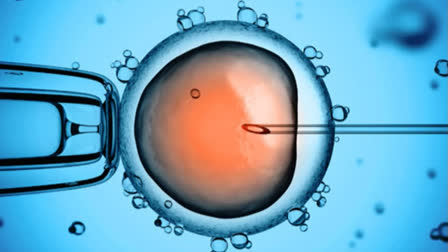Toronto (Canada): On June 14, 2023, developmental biologist Magdalena Zernicka-Goetz presented her research on creating human embryos using stem cells at the 2023 annual meeting of the International Society for Stem Cell Research (ISSCR). This research could increase our understanding of human development and genetic disorders, help us learn how to prevent early miscarriages, lead to improvements in fertility treatment, and perhaps eventually allow for reproduction without using sperm and eggs.
Beyond the limits:Synthetic human embryos also called embryoid bodies, embryo-like structures or embryo models mimic the development of natural human embryos, those created by fertilization. Synthetic human embryos include the cells that would typically go on to form the embryo, placenta and yolk sac, and develop to form the precursors of germ cells (that will form sperm and eggs).
Though research involving natural human embryos is legal in many jurisdictions, it remains controversial. For some people, research involving synthetic human embryos is less controversial because these embryos cannot develop to the equivalent of postnatal stage humans. In other words, these embryos are non-viable and cannot result in live births. In addition, some maintain that the creation of synthetic human embryos would allow for research beyond the 14-day limit that typically applies to natural human embryos. But would it?
Laws in the United Kingdom:The research presented by Zernicka-Goetz at the ISSCR meeting took place in the United Kingdom. It was conducted in accordance with the Human Fertilization and Embryology Act, 1990, with the approval of the U.K. Stem Cell Bank Steering Committee.
U.K. law limits the research use of human embryos to 14 days of development. An embryo is defined as a live human embryo where fertilisation is complete, and references to an embryo include an egg in the process of fertilisation. Synthetic embryos are not created by fertilization and therefore, by definition, the 14-day limit on human embryo research does not apply to them. This means that synthetic human embryo research beyond 14 days can proceed in the U.K. The door to the touted potential benefits and ethical controversies seems wide open in the U.K.
Canadian law:While the law in the U.K. does not apply to synthetic human embryos, the law in Canada clearly does. This is because the legal definition of an embryo in Canada is not limited to embryos created by fertilisation. The Assisted Human Reproduction Act (the AHR Act) defines an embryo as a human organism during the first 56 days of its development following fertilization or creation, excluding any time during which its development has been suspended.
Based on this definition, the AHR Act applies to embryos created by reprogramming human embryonic stem cells in other words, synthetic human embryos provided such embryos qualify as human organisms. A synthetic human embryo is a human organism. It is of the species Homo sapiens, and is thus human. It also qualifies as an organism a life form alongside other organisms created by means of fertilization, asexual reproduction, parthenogenesis or cloning. The definition of an organism does not stipulate a specific means of creation and so can include creation by means of reprogramming embryonic stem cells.
